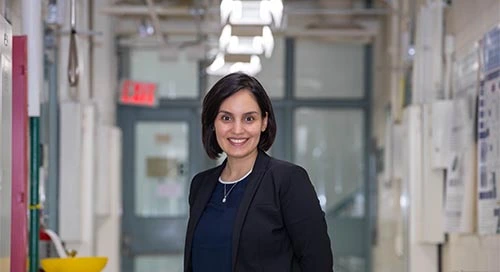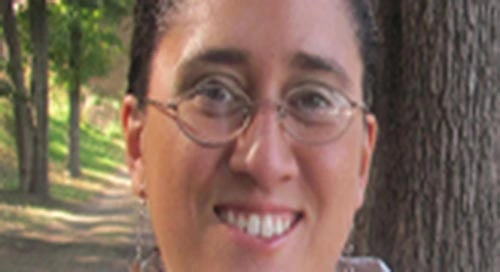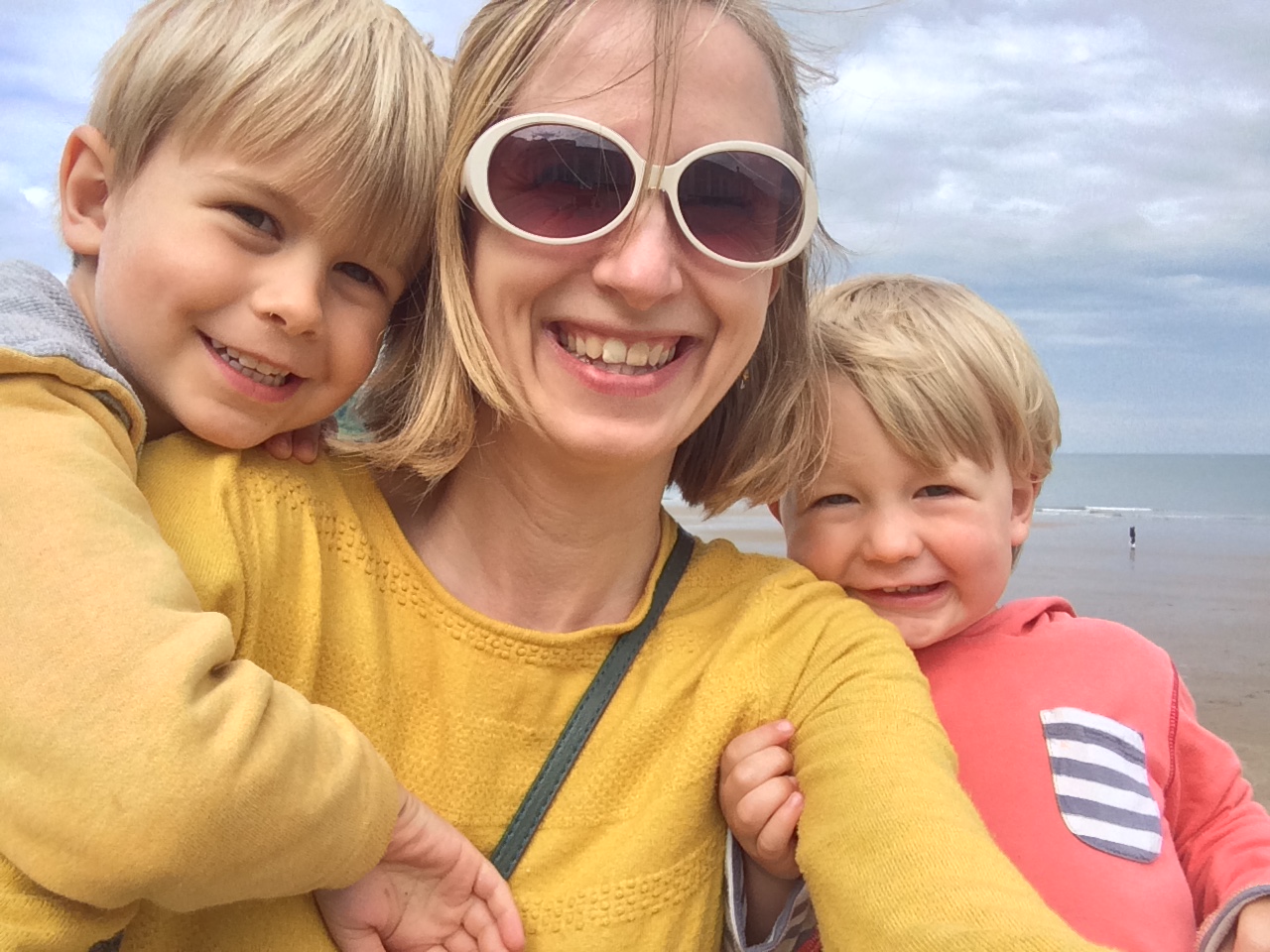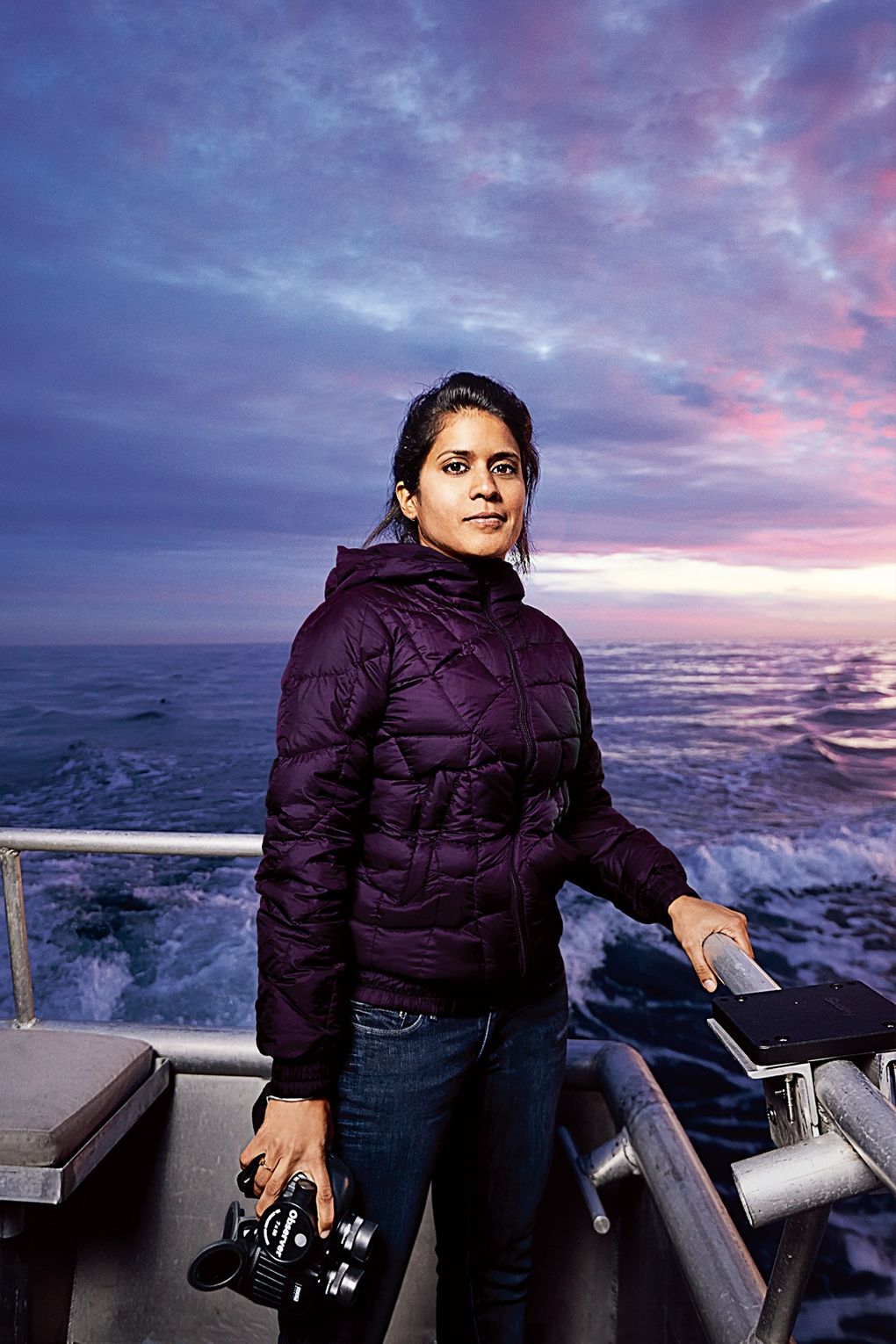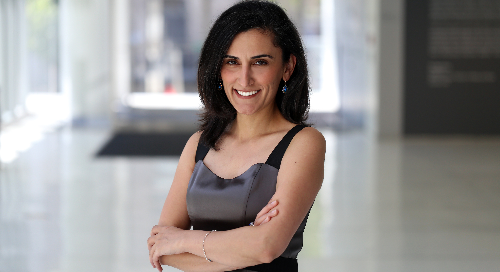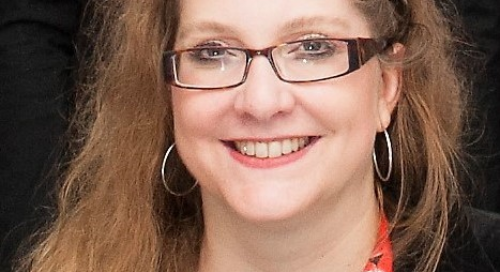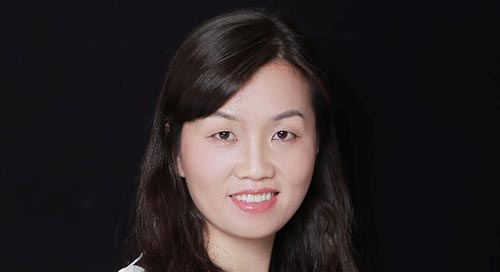women-in-engineering-an-interview-with-jennifer-rupp
It’s no secret: Engineering is not just a man’s world. Perceptions – along with demographics - are shifting, and Wiley are proudly part of the movement to raise the profile of women in engineering, to inspire future generations.
Here, we celebrate engineering researchers in a collection of interviews with authors, editors, editorial board members, and society contacts. In this piece, we meet Jennifer Rupp, editorial board member for Advanced Materials Interfaces.
Name, job title & area of research/work?
Jennifer Rupp dedicates her science and engineering to processing and the design of solid-state materials for novel energy and information devices. This ranges from alternative energy storage via solid-state batteries, solar-to-synthetic fuel conversion, or novel types of neuromorphic computing entities for data storage and new sensing functions to track chemicals in the environment. For example, she enjoys currently exploring how Lithium solid-state battery materials can gain additional functions for neural network computation or sensing of the environment. In this effort that she coins “Lithionics”, she explores how to give more functions to established materials in batteries and reduce resources through new chemistry and physics in their operation principles. The second focus of her work is to engineer cheap solid-state chemistry and processing routes to make solid-state and hybrid batteries a safe and sustainable energy storage source for electric vehicles and mobile electronics. She actively collaborates as an academic with a wide portfolio of companies to support a fast and joint transition of research on batteries and materials therein to society.
Jennifer is currently an Associate Professor of Electrochemical Materials at the Department of Materials Science and Engineering, and Associate Professor at the Department of Electrical Engineering and Computer Science at MIT. Prior she was a non-tenure track assistant professor at ETH Zurich Switzerland, and scientist and postdoc at MIT (2012-2011), the National Institute of Materials Science (NIMS) in Tsukuba, Japan (2011), and ETH Zurich (2010-2006).
She has published more than 90 papers and holds more than 12 patents and book chapters. For several years she has been a frequent speaker and multiple-time re-elected panel member at the World Economic Forum to support technology trends and discussion for the future of computing and energy devices using renewable energy sources. She supports the scientific community as an Associate Editor at Journal of Materials Chemistry A, focused on Energy topics, and has been a lead organizer for Solid-State Battery and Neural Computing for AI symposia at various scientific societies including Materials Research Society, Electrochemical Society or International Electroceramic Society.
How or why did you choose engineering as a career path/area of study?
When I was a child there were two fields that inspired me: music playing loud notes in a band and environmental activism and science. I have always been truly driven by wanting to contribute to questions of energy conversion and storage and supporting with material science and tech in the race against climate change. I decided that music became my hobby and my first salary as a graduate student studying material science, went obviously to be fully spent on a piano for entertainment that has meanwhile moved with me over the Atlantic from Europe to the US. However, the decision to be a material science engineer came early on, and in particular with the need for support in short-term available technology being available to profit on high shares of renewables for our society I never regretted this decision.
What inspires you about Engineering?
What I truly enjoy about material science and engineering is that it is a very interdisciplinary field that gives a fascinating playground to create new materials, design their structures from atoms to macroscale up to new device functionalities for energy and information that have never been there. It is like boarding a space ship and venturing off to new planets for exploration every day. Now it is important to realize that in the discipline of materials there is not only the science aspect but it is also a strong engineering discipline. For example, I am personally involved in supporting companies worldwide in new ceramic product chemistry and processing technology for example to release new and efficient electrolyte or electrode powder compositions to the market for battery manufacturing. That may support future automotive or mobile batteries to be safe and allow for fast charging times. On the other hand, I work as an engineer with companies that produce electrochemical devices and design batteries, that are trying to get high-performance characteristics or need completely new device designs in terms of form factors or safety aspects, which can range from batteries, sensors, fuel cells to computational devices. As a professor, I realized over the past several years that a scientific publication may not necessarily lead to a fast transfer of technology to market and support our society in fast access and use of new green energy sources and technology. So, I see high value and personal satisfaction to support the industry as an engineer for a faster transfer of scientific discoveries or ideas to the market. This can only be done by working together, and understanding that as an academic one should not only write excellent papers and foster your own career, but also do a little more which is to support the industry in tackling this relevant technological challenges to have green energy sources and devices ready for society.
What challenges do women face in the Engineering professions/academia?
Minorities and women still face more obstacles in their engineering careers, which has been shown in much statistical evidence over the past decades. For example, recent statistics in a publishing house revealed that female engineers and scientists publish less often in high impact journals, often do not even submit to these as their mentors do not support them enough, are less likely to be the last author on high impact papers and have often had to fight harder to get their work acknowledged by the field. Also, a statistic of the University of Zurich in Switzerland revealed some years ago, that for promotions women need a significantly longer list of publications and more high impact papers to get the same rank in academia such as professorship promotions.
Now, I would rather think positively about what can we do as a society and engineers that leads to shifts in statistics towards better equality in the long run, rather than only listing challenges. Here are some examples that are based on where I would personally judge that women and minorities still face challenges, and what we can do to contribute positively to change that.
Minority and women need a high level of mentoring that is taken seriously. Motivating leaders in the field to dedicate personal time and identify talent, and give critical feedback and not only “hey all is great !” is of importance. For example, one could try to identify what are the 5 aspects that could be improved to sharpen the research and engineering skills of a female candidate and invest time as a mentor. It has been discussed that there is a lack of good mentoring opportunities for women and minorities as their networks are not so strong. here spending time and supporting early on and over a long time professional careers of selected candidates is of the essence to lead to change.
It is important to check out on a personal level whether within engineering and research groups there is true equality existing. In my field of electrochemical materials, there is still a very low number of truly equal team compositions in terms of gender or ethnicity in particular on a postdoc level before applying for academic or leading positions in the industry. While it may take time to foster as team head an equal team composition in terms of gender and including minorities, as one may need to seek more and identify high potential candidates. And, yes, this may be hard – but it can be done. I judge this action as an important part of equality, to start in own groups and live a good example.
Investing time and effort to propose strong female and minority engineers for awards and preparing them to take leadership roles for example in organizing symposia in their field. Motivating and writing in personal time letters to support them and discuss truly their engineering aims and ideas of directions that may influence the field is of the essence. I judge as one of the biggest obstacles in a female or minority career that they often may not necessarily propose to be nominated or have the network to carry them on this journey. Here, more encouragement is needed to pick up leadership roles for females and minorities and can lead to a strong impact in the change of statistics. For cultural reasons, some may also be less encouraged to do so, hence a good international screening of talent and support, by being interested and invested in their engineering and science interests is very important and can give the confidence to apply and lead.
Today, it is surprising that females or minorities may still run into more obstacles when wanting to publish work in high impact journals. Encouragement to own their research and engineering achievements, their success and not having to back off or go small in the selection of journal opportunities is important. The risk is that females and minorities may not have the same support system and network to encourage them to go for that, and also may face unconscious bias concerning their work. As much as it is personal discretion whether an engineer or scientist chooses to publish in a high impact journal or not, this should not be decided by gender or ethnicity. So, it is not up to the personal belief whether one is a fan of impact factors or not, however, and that is a reality in promotions of academic career females and minorities will be judged by others. Outsiders of the home institution may judge factors such as impact factor or journal standing in the field as important criteria to access the candidate for promotion. Hence, it is important to encourage young engineers and scientists to identify leading and accepted journals in their field and to submit and publish here and not to shy off.
Most importantly, and that is also still a challenge of today: if you see discrimination … act and defend in particular junior female or minority academics – as they may not be able in certain situations out of fear, hierarchy, or promotion stress to do so.
What is the ratio of female to male in your workplace/faculty?
I joined MIT's Department of Materials Science and Engineering as I was very impressed by their strong and effective efforts to foster equality among all ranks. This was personally one of the best decisions in my career, I have been truly supported and am impressed that in faculty commissions there can even be an almost equal female to male faculty ratio present. This is the right direction to “live” an equal engineering community.
Within my own team, I have currently an equal ratio of female to male postdocs. If I look around, I believe this is still a rarity for electrochemical science and engineering groups around the world. Here, I worked together with the team in identifying talent and motivating these talented individuals to join us and become part of our research community.
What is the most exciting thing about your job?
Early on when I started my professor's career I discovered that this job allows you to explore everyday new directions and frontiers of material science, and to support my research on energy materials and device impact on the energy landscape to be green. Personally I believe that one can choose to vote or join politics to have an impact in an important societal area. However, having a science or engineering degree allows you to have the luxury to do more: to make more of an impact with new engineering solutions the landscape of available technologies to mitigate climate change and support on storage solutions of renewables.
What does a typical day in your job involve?
On a typical day, I would take breakfast with my family and chat with my two kids. Once all leave the house and after another cup of tea, I would start to get excited about the day and discoveries ahead and join MIT for meetings or writing on scientific manuscripts. At MIT I will meet with students to discuss their science and ideas, lecture classes, or meet with companies to support material and device design. When I am writing I may take the luxury to hide in the library or in a great coffee in Cambridge MA, shutting all emails off and simply think, write and enjoy to think about new innovations. After such a day, I will pick up my younger one from childcare or older one from school, cook dinner and relax.
What kind of impact would bring you great satisfaction in your work?
If one-day innovations we had in the lab translate to alternative and more efficient ways to power electric vehicles and allow for a wider spectrum of available renewable fuels using socio-economically acceptable elements that would be a warm feeling of satisfaction. I would anticipate that if we can manage that these innovations and technologies may support to be actively used by the wider society and do not remain commodities of the rich, that would leave me with a very happy feeling and purpose.
What are your hopes for the future of Engineering?
In the critical time of undebatable climate change engineers have the task to improve existing energies operating on renewables and to design and develop technologies of tomorrow to support in the race for time. I am a true believer, that politics require technology to be ready, and there are challenges on the way to support society in a carbon dioxide neutral society and towards safe ways to mitigate renewables in energy storage for vehicles and mobile electronics. Here a joint effort and task force of engineers from academics and industry working hand-in-hand are needed to succeed in the fast transitions of discoveries and science to competitive products.
What would you say to girls in school/college who may be considering Engineering as a career choice/study option?
Engineering is not only what you know from school, related to chemistry or mechanics in physics. There is a whole world awaiting you with new themes. Importantly, you could be the one to drive change and contribute with your ideas, knowledge and discoveries as an engineer to impact our society in important questions such as access to renewable energy, medicine or sustainability and distribution of food. Be brave and courageous and dream big, as you are allowed to do so, as is everyone on this planet independent on their gender or ethnicity to do be that engineer. Simply check it out.
| You can check out the full collection of interviews at | |
| Women in Engineering | |
| Help us to inspire by sharing our Women in Engineering stories on Facebook and Twitter! | |

